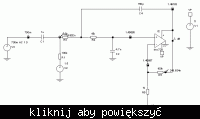Kinshoro
Member level 3

Hello, I have made a non-inverting amplifier using opamp lmv721 or mic preamp for mems mic sp0103be3. The problem is I have amplified it almost a 100 times and the mic also amplifies the signal 10 time...... so I have a total gain of 1000..... so why is it that when I test my signals I get amplitudes of only 4 to 50 mv or sounds such as tapping on the surface of a table and no sound from my voice........ I have attached the circuit here....




